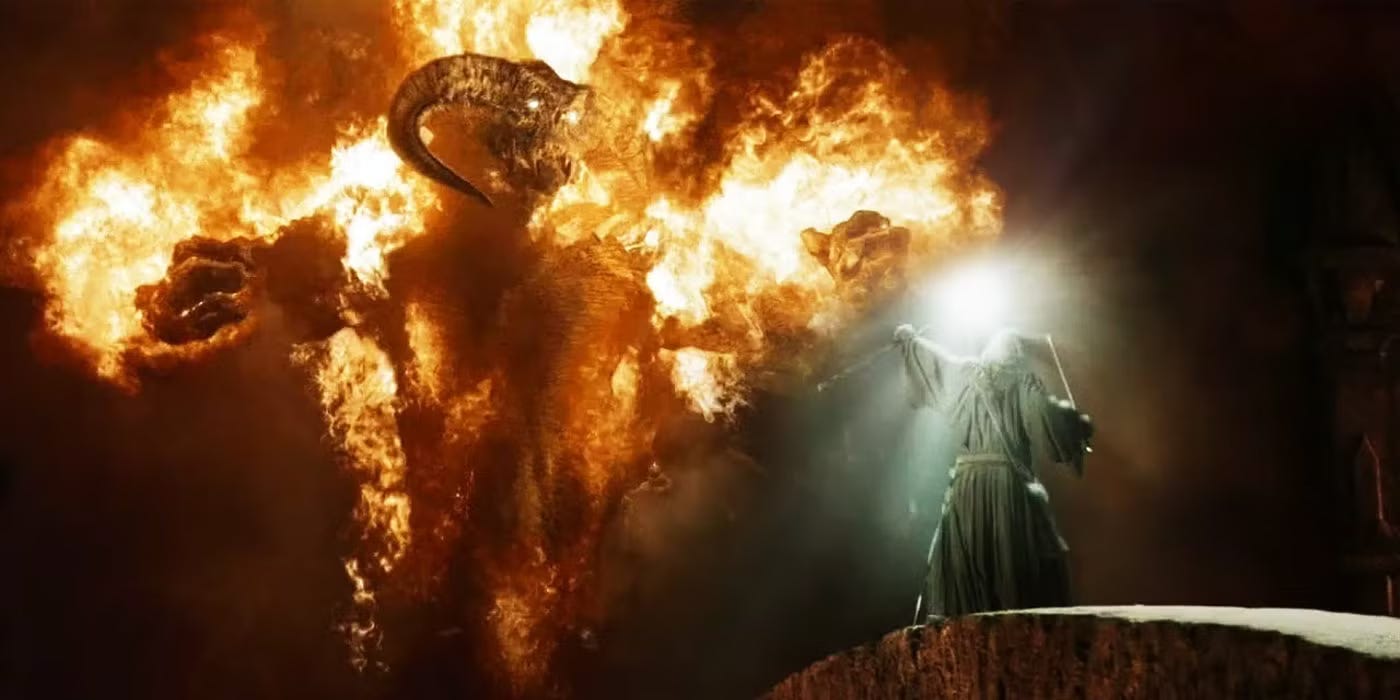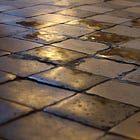Reconstruction of the Fables
Working to redeem the abyss
Reflections on a new essay for Romanticon, an invitation to a free live online event on Saturday, and revisiting the Into the Deep essays which I published in the autumn of 2023.
For his seventh birthday, we gave Alfie a one-volume hardback edition of The Lord of the Rings. I mean, there might have been a couple of other presents, but that was the one that I was excited about, and over the months that followed, bedtime by bedtime, the pair of us read our way to Mordor with Frodo and Sam. There’s a particular joy in travelling a path like that with a child who is coming at it for the first time: fighting the Balrog on the Bridge of Khazad-Dûm, Gandalf falls to what can only be his death, and for hundreds of pages afterwards, you’re keeping the secret that he will return.
On those occasions when the process of writing roots down deep into the imaginal, I find reality starts to wobble at the edges; not maddeningly so, but just enough to hint at patterns beyond our reckoning, the sense of a joke we’ve not quite been let in on. Deep into the writing of my inaugural essay for
, Fables of the Reconstruction, I was working on a paragraph about just what kind of mischief Ivan Illich is up to when, after the years of his fame, he chooses to put on the mantle of the historian – and I turned up the remarkable fact that the man has two graves on different continents.1Not until I was writing the final line did I realise that it had anything to do with A Midsummer Night’s Dream, but when I got there and couldn’t resist allowing my words to merge with Bottom’s great speech which builds to the declaration, “It shall be call’d ‘Bottom’s Dream,’ because it hath no bottom”, this rippled back like a punchline through everything I’d already written, and I saw what the essay was really about.2 It is a working to redeem the abyss.
Talking with
the next day, she pointed out that the fear of falling is the most deep-rooted of human fears. Our ancestors were tree-dwellers and this was the setting in which we became the kind of creatures that we are. Human babies are born with a reflex to grasp hold of their mothers’ fur: bone-memory of an ancient need.The story I tell in Fables of the Reconstruction starts in my mid-twenties with my best friend of those years, trying to find our way out of what she called “the theory hole”, the pit into which a bright undergraduate could fall in the high era of deconstruction.3 There’s an ambiguity here, I realise, because at times I talk about that hole as though it were an elephant trap to be escaped, and at others it it figures as “an abyss of nihilism”. Anyway, after various twists and turns, the story ends with a more recent conversation, in which Caro responds to a question about the nature of beauty with a glorious riff about endlessness:
If you could ever get to the bottom of love and kindness and art, then our lives are too short. One’s own taste and what one is given and what is made by others and what is considered beautiful, may we never get to the bottom of it! And may we never all agree, and may we always continue talking about it, forever, and may that conversation itself be a wellspring of beauty. And the heated conversations over red wine, may they continue forever!
And though I’d known this was the shape of the piece from as soon as the idea arrived, it was only at the end that I saw its significance: the transformation of the abyss from a source of fear into a source of joy, its bottomlessness promising not annihilation but a humble image of eternity.
At least, that’s how it seems to me, having written it. Here’s Caro’s summary, which is so pithy, I offered to hire her to write my book proposal:
Go and read it for yourself, and support
, they may just be doing the thing that’s needed at this moment in the timeline, for reasons expressed in ’s recent piece for .An invitation for this Saturday
Consider yourself invited to join me, Rob Hopkins, Pella Thiel and a crew of the other contributors for a free live online event on Saturday to mark the YouTube release of Mattias Olsson’s documentary, Imprint. Made in collaboration with the Swedish Transition Network, the film is a journey around our oblong land, led by the question: “What does it mean to be a human being in the age of the Anthropocene?” It weaves together thirteen close-to-the-ground stories from the places where Mattias stopped off along the way, including our old shoe shop here in Östervåla, where he arrived just a few days after I’d finished the first draft of At Work in the Ruins.
Sign up at the Eventbrite link if you want to join us this Saturday, 6 September at 5pm CEST / 4pm BST / 11am East Coast / 8am West Coast. And watch the trailer here:
Revisiting the Ruined Church
Two years ago this week, I published the first in a series of essays which I called Into the Deep, an attempt at reckoning out loud with the faith tradition into which I was born, the ways in which a childhood around churches formed me and how this continues to be a live part of who I am to this day. There were meant to be four essays, but before I could finish the series, I found myself pulled under, into a quieter journey. Partly it was the realisation that some readers were taking all this, eagerly or fearfully, as a kind of metaphysical striptease, a prelude to an announcement of conversion or, to the cynical, a piece of bandwagon-hopping. “It’s not quite like that,” I wanted to say, which invites the question, “Well, what is it like?”
One of these days, I suspect I will have more to say about such things. But meanwhile, that trio of essays I wrote in the autumn of 2023 are among the pieces that took me deepest into the imaginal, in the years since I started writing this Substack – so two years on, I wanted to share an invitation to revisit them.
Thanks, as always, for joining me on this winding path, and especially to those of you whose support as paid subscribers allows me to pursue its unexpected turnings.
DH
Last year, I made a pilgrimage to the churchyard where he is buried on the edge of Bremen, a story I will finally get written up here someday soon. But a few weeks ago, someone published a long essay about the pilgrimage they had made to a cemetery on the edge of Cuernavaca, and I found footage online that confirms the presence of a grave there with the same name and dates. To solve this mystery would be beside the point: the sheer fact of it says enough about the wild uncontainability of the man, how out of time he truly was.
As my old tutor A. D. Nuttall wrote of this passage, “His best friend … could not describe Bottom as clever. Yet Shakespeare gives him the most profound speech in the play.”
Apropos of the previous footnote, although it’s true that this was the general milieu of our generation and therefore formative, I should note that I also benefited from teachers such as Tony Nuttall who paid no more attention than was needed to the fashionable theorists of the time.





I had the great fortune, Dougald, to play Nick Bottom when I was a student at Rutgers in the early 1980’s. What a character, and talk about Bottom’s dream, something I don’t think any of us can get to the bottom of, for sure. As I’ve gotten older I have seen the limitations of literary theory and deconstruction. Yeah it makes sense to look at the hierarchies present but only as one piece of a poem or play, or any text really. How much better it is and more authentic to the text to simply enjoy being in the audience laughing out loud to the antics of the rude mechanicals, the fairies, and the Duke and Duchess on their wedding day at night. I shall have to take a good look at your reconstruction piece soon.